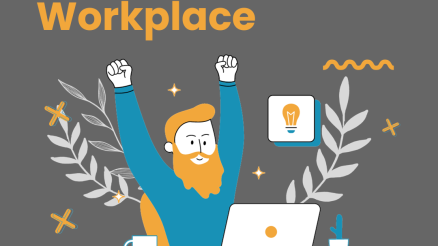No two humans are exactly alike. People are not only different in physical characteristics but they have different perspectives and world view.
Today the world is becoming increasingly diverse. And same goes for organizations and workplaces. Employing people with diverse background brings us all together and strengthen our values.
Diversity at workplace is an asset of every agile and successful organization.
This article explores benefits of workplace diversity, challenges and what are ways to create a more diverse and inclusive workplace.
What is Workplace Diversity?
Workplace diversity refers to inclusive working culture that provides equal rights and opportunities for all workers, regardless of gender, color, age, race, ethnicity, nationality, physical ability, sexual orientation and religious beliefs
Workplace diversity builds a cohesive team which has a greater sense of togetherness and ability to work for common goals.
Benefits of Workplace Diversity
Diversity in the workplace has many benefits from increased productivity to creativity to employee’s satisfaction and many more.
Let’s discuss some key benefits of workplace diversity.
Productivity
Diverse teams are more productive. A research study reveals that a diverse team improves 60% at its decision-making abilities.
This is because diversity brings variety of skills, perspectives and experiences to a workplace which help to solve problems.
Diversity means inclusion. And if team members feel comfortable about their identity and they don’t experience any discrimination then they are more productive at workplace.
Creativity
Diversity in workplace leads to innovation. Many research findings are showing that teams with diverse members are more likely to come up with new and innovative ideas than those that are not as diverse.
If team members are not diverse, they have same perspectives and worldview. They have similar thinking pattern and thought process. There are less chances that this kind of team find out-of-box solutions.
Organizations usually have strategic meetings outside their office and workplace. Why? By changing environment, they have fresh perspective which can lead to fresh ideas and solutions to challenges they were stuck on earlier.
Reduced bias and discrimination
Workplace diversity can also help to reduce bias and discrimination. This is because when people are exposed to those who are different from them, they are more likely to view them as individuals rather than members of a group.
With increased understanding of each other, team members break down their stereotype and reduce bias and discrimination.
Enhanced Team morale
Workplace diversity can enhance team morale in a number of ways.
It can also help to build a sense of team spirit and friendship among employees. When employees feel like they are part of a team that is united by a common goal, they are more likely to be motivated and committed to their work.
Reduced employee turnover rates
Diversity and inclusion in the workplace give a sense of satisfaction to employees.
When employees feel like they are a valued part of the workplace, they are more likely to stay with the company. So, organizations with diverse teams have always lower turnover rates.
Positive Reputation of Organization
Organizations with diverse team are viewed as socially responsible. Such organizations are contributing to make more tolerant and inclusive society where everyone is embraced, accepted and given space to work and thrive in life.
Moreover, people with different backgrounds and identities can easily relate to products and business of that organizations which have diversity. This will open more ways to more opportunities, new business and customers.
Challenges of Workplace Diversity
Making your workplace diverse and inclusive is quite a challenging task. That is easier said than done.
Let’s check out what are key challenges of workplace diversity.
Compatibility with Organizational Goals
Every organization has its own goals and objectives. The practice of diversity should be aligned and compatible with organizational goals.
Organizations need to think over that how diversity will contribute to achieving its strategic goals. Is diversity really helpful where organization want to go. You should focus on what type of diverse resource are required and what are gaps in being a diverse team.
Difficult to implement
Many a times organizations make a big plan to have diversity in their workplace. But their plans remain plans. Why? Because these are difficult to implement.
The real test of diversity plan is to put it into action and implement in its true spirit. It is not about making plans or developing manuals or drafting policies. It is more about materializing those plans.
Many organizations stuck here when it comes to implementation. Therefore, leadership must focus on implementation side of diversity plans rather than just making plans.
Capacity
Organizations face challenges when they implement diversity program and plans. It requires a specialized knowledge and skills to successfully implement diversity programs.
Many organizations employ special resource who is tasked with implementation of diversity plans.
In addition to this, organizations can design special training programs which focus on what knowledge and attitude and behaviour is required at workplace to ensure implementation of diversity.
Resistance
When organizations are implementing diversity goals then everyone is not convinced with this idea. There may be some champions of workplace diversity but there might be a few on the opposite side. They may have power and intention to block the whole diversity plans.
In this situation role of leader is critical. He/she should make effort to first know who are resisting and then he should engage those resisters through candid dialogue. Effective communication really helps leader to win buy-in of all of team members to materialize diversity goals.
Communication
There are always communication issues for diverse teams at workplace. It could be language barrier or different team members have different preferences for communication channels.
Young team members might be comfortable with quick chat tools for internal communication but senior members may not be comfortable with these tools. Oher example of communication challenge is that some team members speak English as second language and they may feel problem in understanding any native English speaker in a meeting.
If these kind of communication issues are not addressed in the first place, then these hamper implementation of diversity plans.
Conclusion
Workplace diversity means inclusion of team members with different backgrounds. Organizations can hugely benefit from having diverse team at workplace. Benefits include increased productivity and creativity and it also brings positive outlook to organization. But implementation of diversity is not an easy task and there are challenges in its implementation. That’s why leaders must know these challenges and solutions prior to starting off diversity program at workplace.



